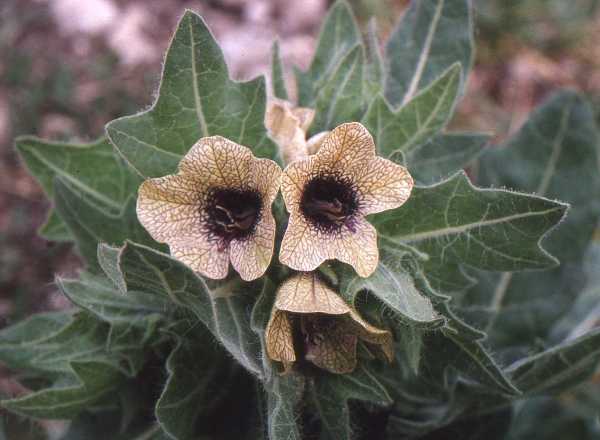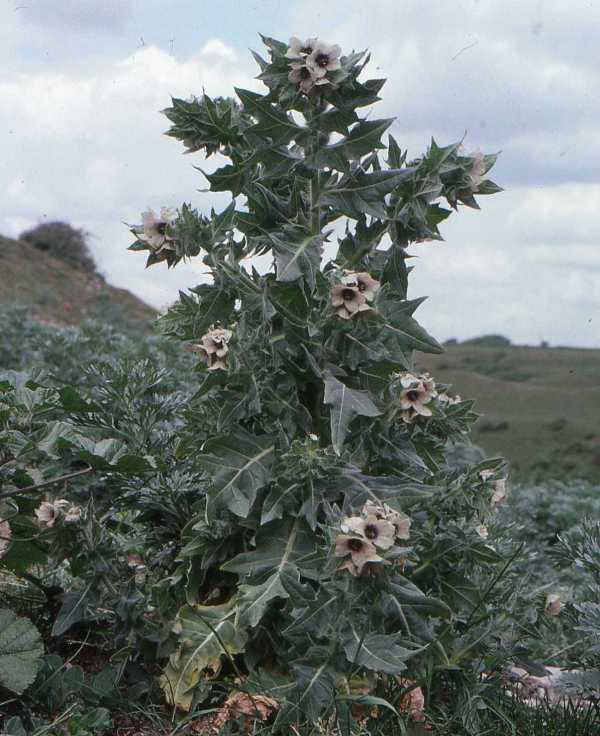Trees Birds Mammals Fish Amphibians Reptiles
Wild Algarve
Bookshop
Hyoscyamus niger - Henbane
Phylum: Magnoliophyta - Class: Equisetopsida - Order: Solanales - Family: Solanaceae

Henbane is one of our most deadly wildflowers with all parts of the plant being poisonous. For that reason, if no other, it has an interesting history. Other common names are 'Devil's Eye' and 'Stinking Roger', the latter referring to its strong, unpleasant smell.
Description
Henbane, a member of the family Solanaceae, is a very hairy, sticky plant that grows up to 75cm in height. The flowers are 2 to 3cm across and are creamy-yellow and funnel-shaped with a dark purplish centres. The leaves are pointed and the lower ones are toothed.
Habitat
This poisonous plant is most often found growing on disturbed ground, particularly where the soil is sandy.

Pictures by kind permission of Anne Horsfall
Distribution
In Britain, Henbane is localised but sometimes common in the south and east of England although rare elsewhere. Henbane is also found throughout the Mediterranean region, where it grows in similar places to those in Britain but particularly near the sea.
Blooming times
In Britain and Ireland Henbane is in flower from June until August, but in warmer countries the flowers can be seen from April onwards.
Uses
In 1910 Henbane became famous as a result of the criminal activities of Dr Crippen, who used the plant to source the chemical hyoscine with which he murdered his wife. Other deadly chemicals contained in Henbane are the alkaloids hyoscyamine, scopolomaine and atrophine. The symptoms of poisoning include delerium, and convulsions that lead to coma and death. Henbane does, however, have some medicinal benefits and has been used throughout history to treat various ailments, from travel-sickness to toothache and even mental illness.
Sue Parker's latest ebook is a revised and enlarged edition of Wild Orchids in The Burren. Full details here...
Buy it for just £5.95 on Amazon...
Sue Parker's new ebook is a comprehensive and fully revised edition of her acclaimed field guide to the Wild Orchids of Wales. Full details here...
Buy it for just £5.95 on Amazon...
Please Help Us: If you have found this information interesting and useful, please consider helping to keep First Nature online by making a small donation towards the web hosting and internet costs.
Any donations over and above the essential running costs will help support the conservation work of Plantlife, the Rivers Trust and charitable botanic gardens - as do author royalties and publisher proceeds from books by Pat and Sue.